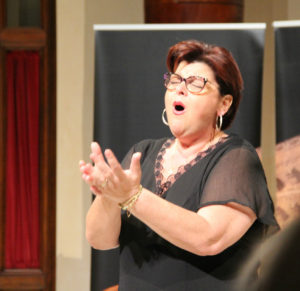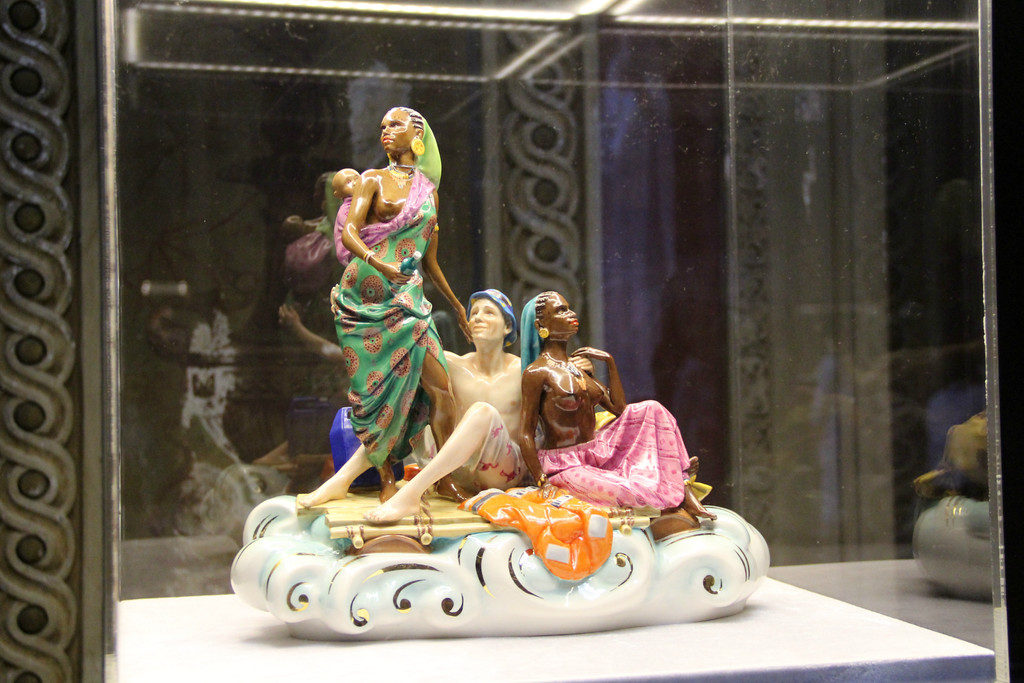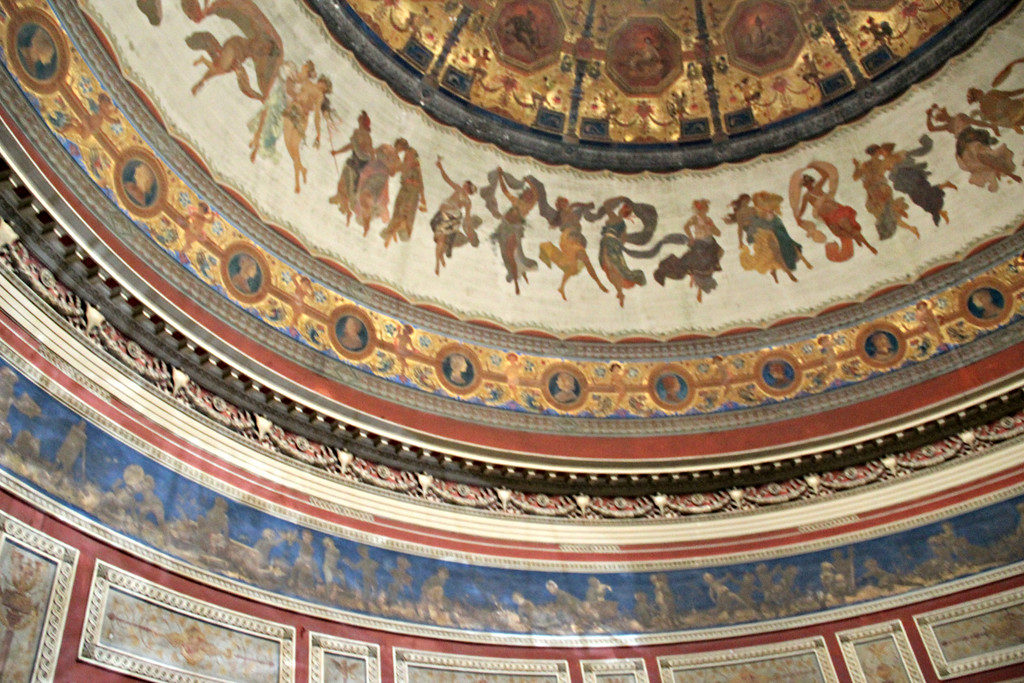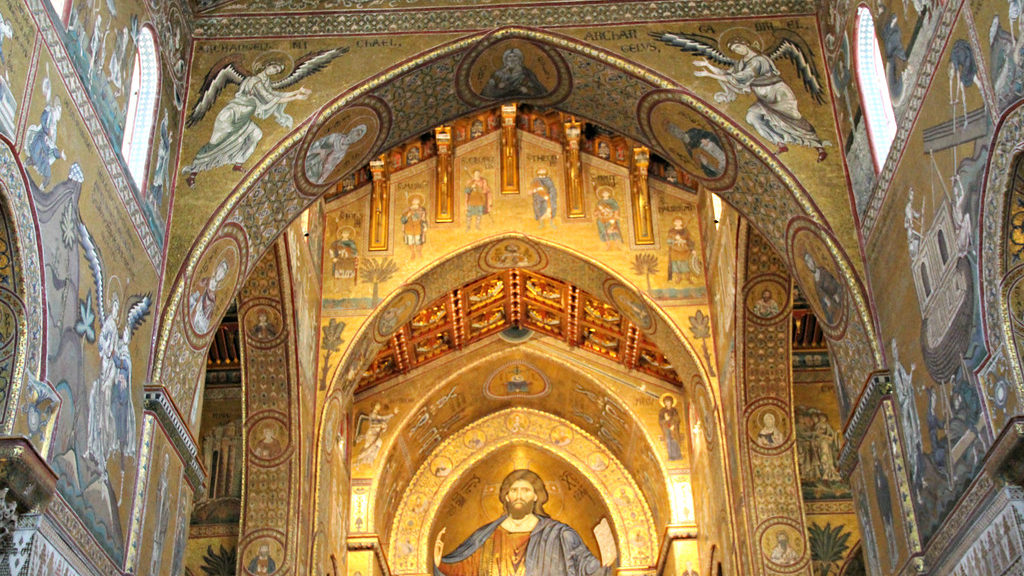
Palermo and Monreale
Our next port of call was Palermo, Sicily. We drove to Monreale to see the Cathedral of Monreale, a UNESCO World Heritage Site. As we looked at the exterior as seen in the first two pictures below, we would not have guessed the cathedral made the UNESCO list. There are two bell towers on either side of the porch which seems plain with the exception of the inlaid marble. The porch was added in the 18th Century. When you enter the cathedral, there is no question that it is deserving of the UNESCO honor. The cathedral features about 68,000 square feet of mosaics. The third picture is of the interior. I was near the front of the cathedral looking toward the back. The lighting isn’t great, but I included the picture to show you how the mosaics are almost everywhere.
This beautiful church has an interesting history (from www.thethinkingtraveller.com):
The story of how this splendid cathedral came into being starts when the Arabs took control of Palermo in 831. They transformed the cathedral into a mosque and banished the Bishop of Palermo from town. Not wishing to venture too far from his beloved cathedral, the Bishop settled in a small village in the hills overlooking Palermo, the site of modern-day Monreale. There, he built a modest church to keep the flame of local Christian worship alive.
Some 240 year later, in 1072, the Normans drove the Arabs from Sicily…In 1174, in an act of piety, thanksgiving and commemoration of the exiled Bishop, King William II ordered the construction of a new church in Monreale, dedicated to the Virgin Mary…Enlightened, tolerant and appreciative of many aspects of North African and Middle Eastern culture and art, William II employed the very best Arabic and Byzantine (as well as Norman) craftsmen to work on the cathedral.
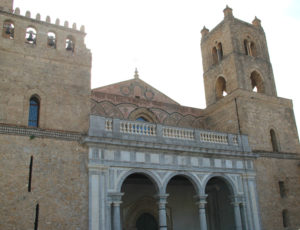


The focal point of the cathedral is the apse featuring “Christ the Pantocrator” which means Ruler of All. It represents Christ in Heaven. He is blessing people with His right hand and holds a book in His left hand with the words from John 8:12. Below this are Mary holding the baby Jesus and saints from the time of Christ. Below those are saints who lived after Christ. I have also included a close-up picture of the ornate altar. There were smaller apses in chapels on either side of the central nave. We left the cathedral through a different door than we had entered and were able to see the apses from the outside. The last picture in this section shows the exterior of the apses.

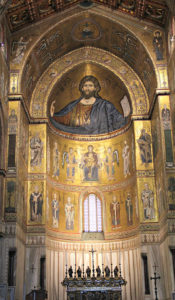
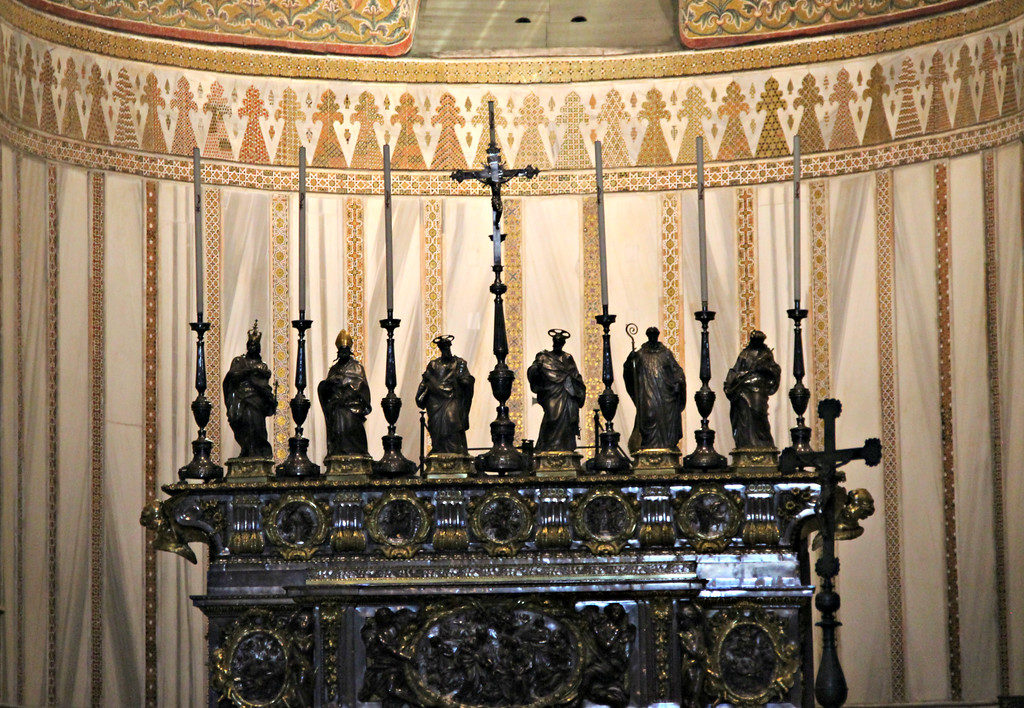
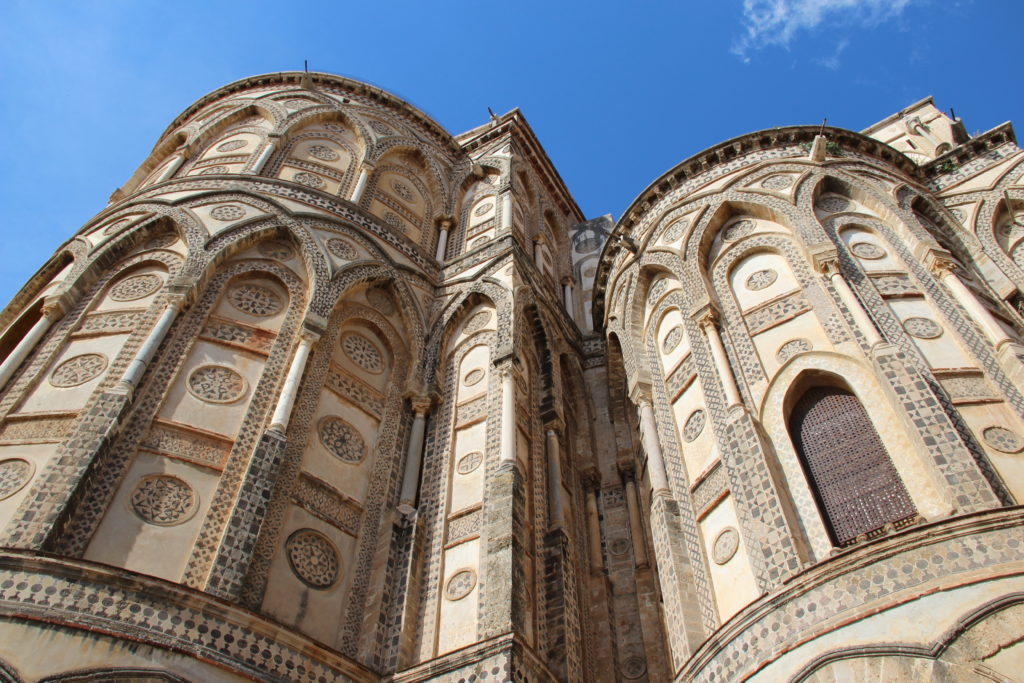
The cathedral has a central nave and two side aisles. The top half of the cathedral is covered in mosaics while there is marble on the bottom half. The mosaics are original although they were damaged in a fire in 1811 so have been restored. There are nine columns on each side. The top of the columns, each supporting arches, are called capitals – they are decorated with religious symbols or a religious figure. The mosaics in the central nave depict stories from the Old Testament. The third picture, a close-up of one of these stories, shows animals entering Noah’s Ark. The detail of two of the capitals can be seen in the fourth picture.
The ceiling was wood and was also damaged in the 1811 fire. It was rebuilt to look much like the original ceiling. It is made of wood which has been carved and painted. The floor is made of marble, decorated with different colors of granite, and dates back to the 16th Century.
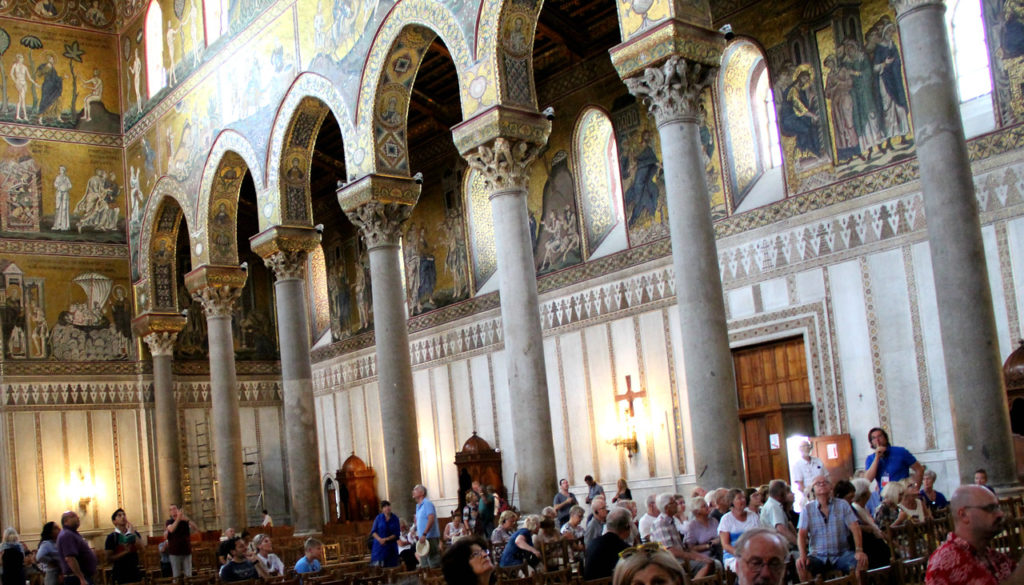

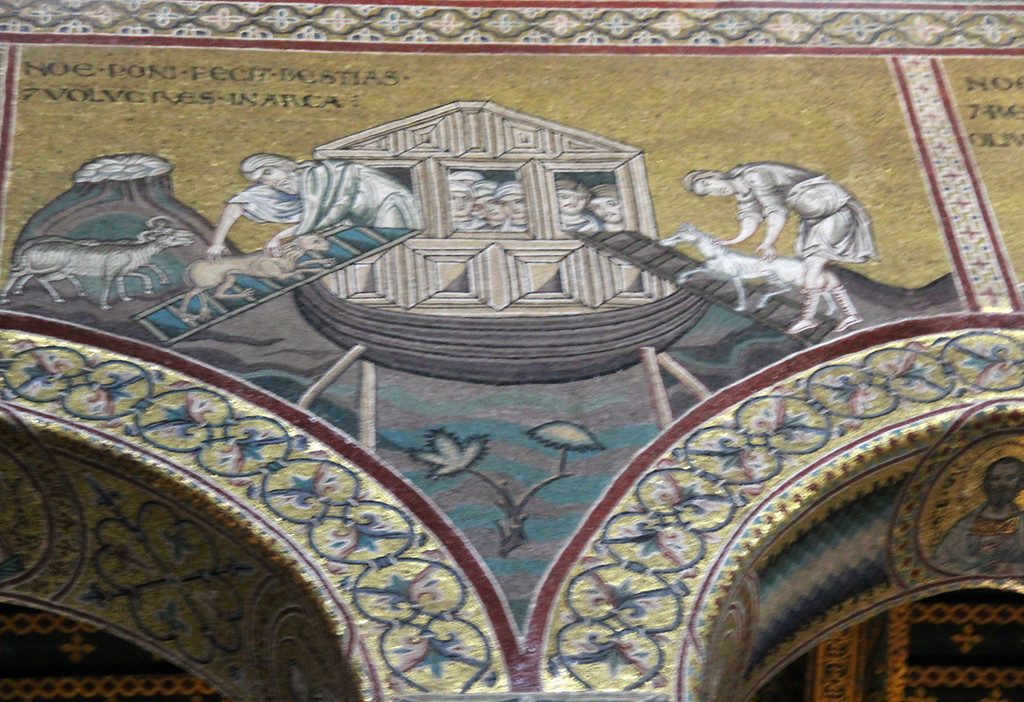
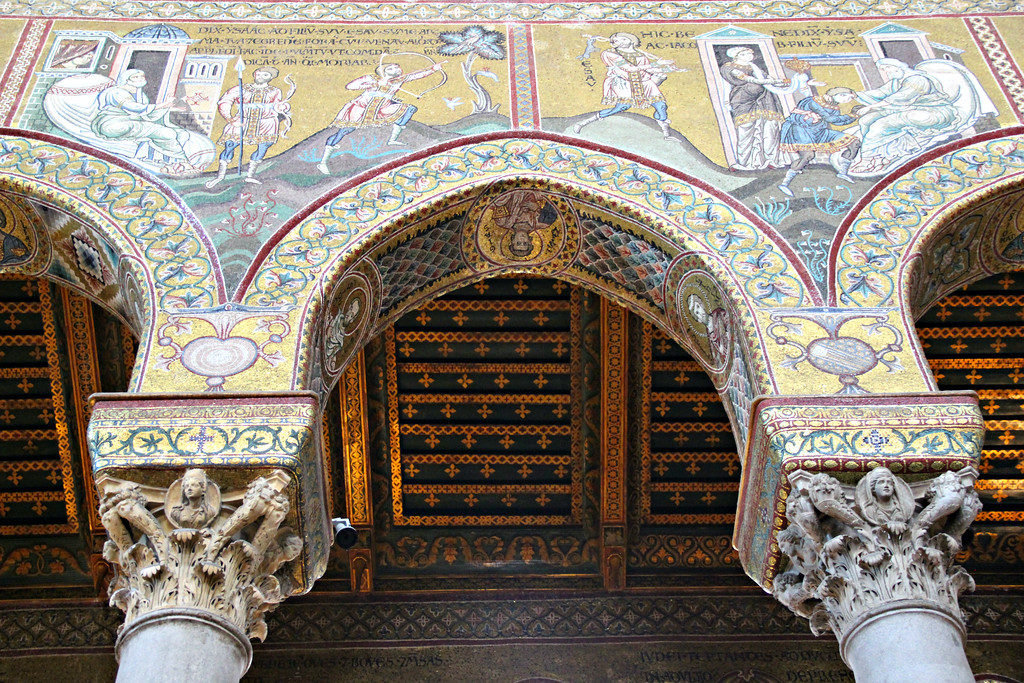

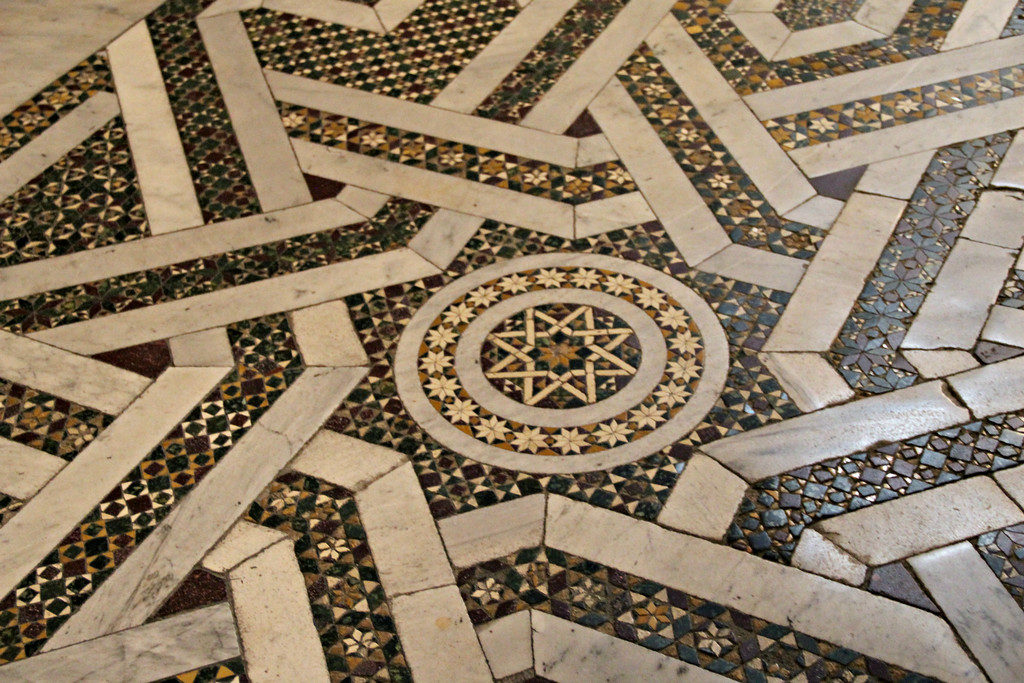
To the right of the central nave are two tombs, the reddish one belonging to King William I. It dates back to the 12th Century and is thought to be his original tomb. The white marble tomb belongs to King William II and dates back to the 16th Century. King William II is credited with decreeing the construction of the cathedral. As we walked past these tombs, we came to another beautiful altar with a sculpture of the Virgin Mary holding Jesus. Several angels surround Mary holding candles.
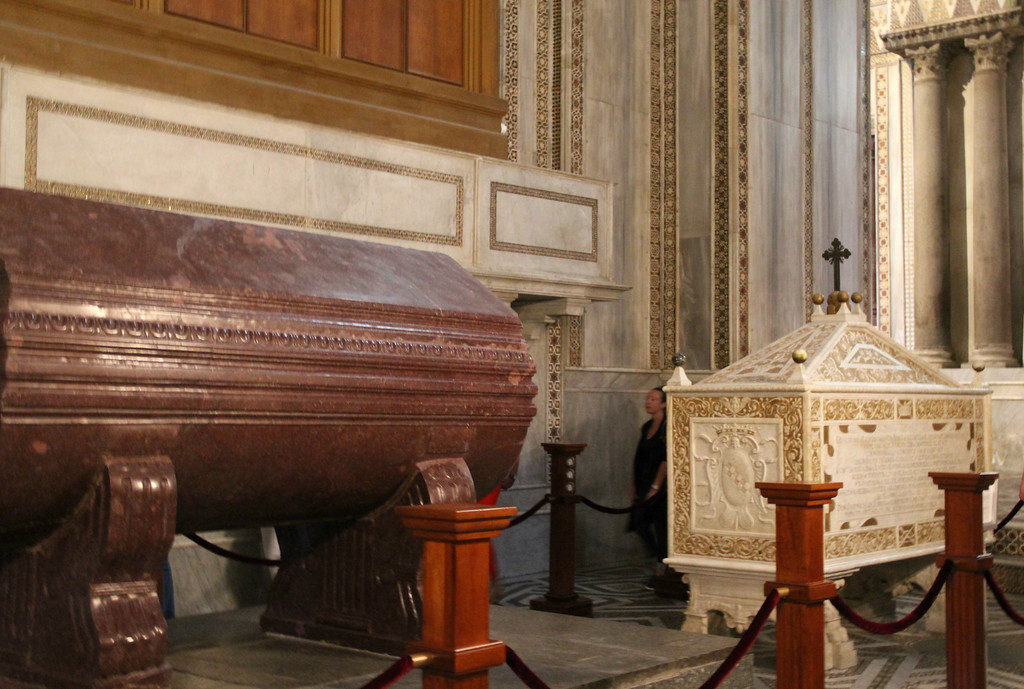
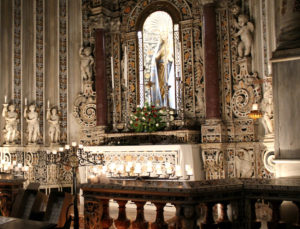
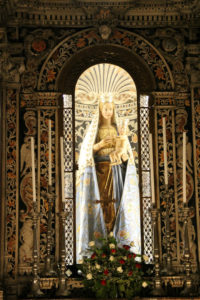
From Monreale, we drove back to Palermo, the capital of Sicily, where we visited the Teatro Massimo, an opera house. Construction of the theater began in 1875 and the first concert was in 1897. Sicily had become part of Italy in 1860. Residents wanted to enhance Palermo’s status as a cultural center which resulted in many donations in support of the opera house. Private firms created the opera schedule for many years but it became a public theater in 1935. The theater closed for renovation in 1974 to bring it in compliance with updated safety standards, but it took much longer than anticipated. The theater’s next concert would not be until 1997. The pictures below are of the exterior of the Teatro Massimo and a model of the theater which was displayed in the Grand Foyer. The steps to the opera house served as the setting for the last scene in Godfather III.

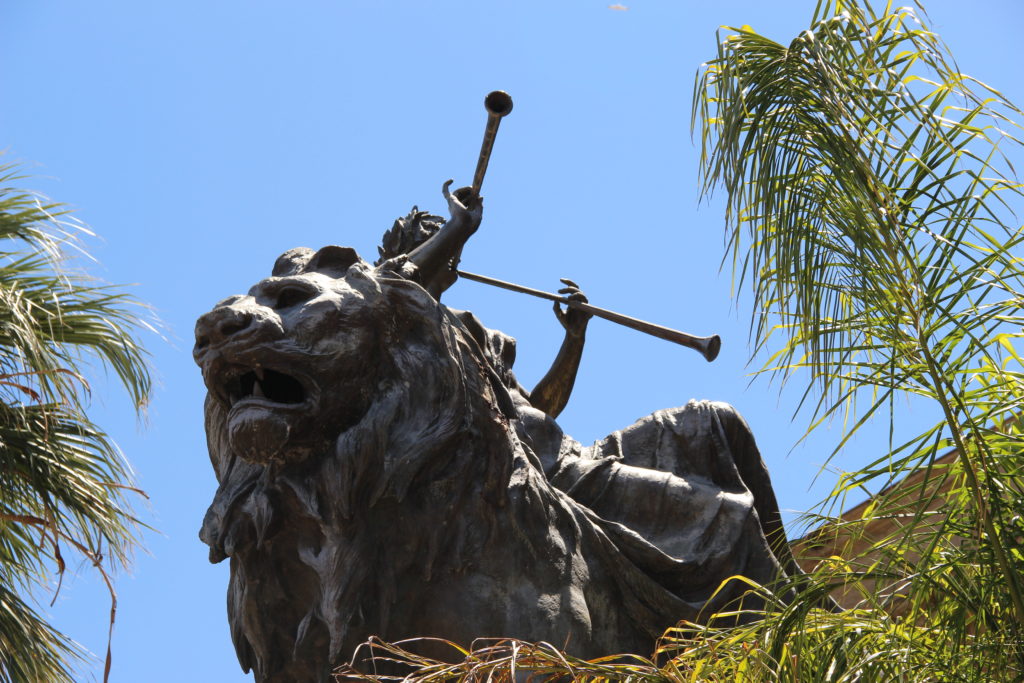
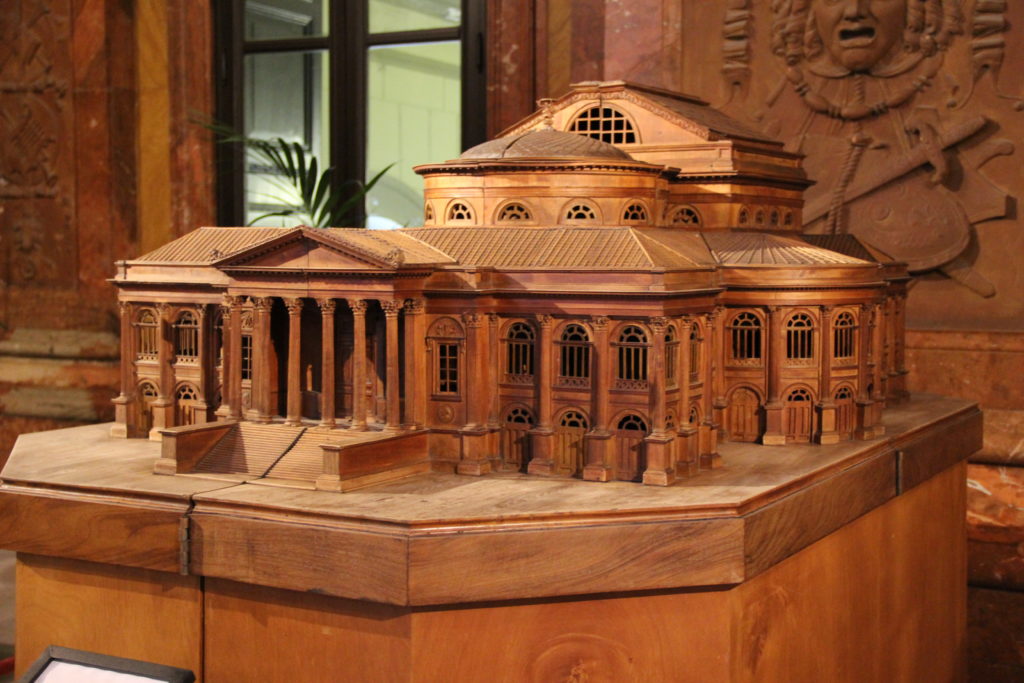
The opera house’s auditorium can hold 1,300 people in the stalls (seats closest to the orchestra), box seats and the gallery. The auditorium is decorated with gold stuccoes, wood, velvet and glass. It is described as “acoustically perfect.” The stage is approximately 15 stories high and is the largest stage in Italy. The fourth picture in this section show the “Royal Box.” It is in the second level of box seats and accommodates 27 people. Immediately outside the Royal Box is the “Royal Sitting Room.” The ceiling in the sitting room is decorated with flower panels made of silk (last picture of this section).
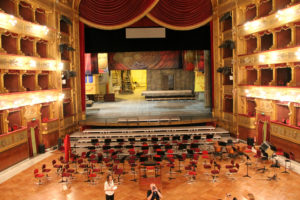
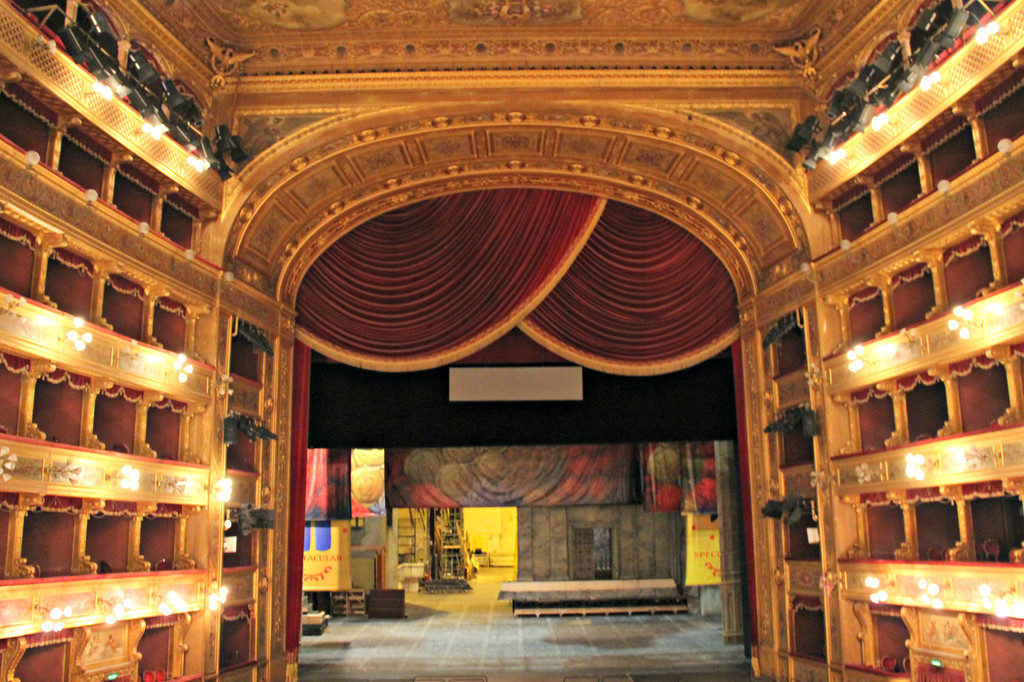
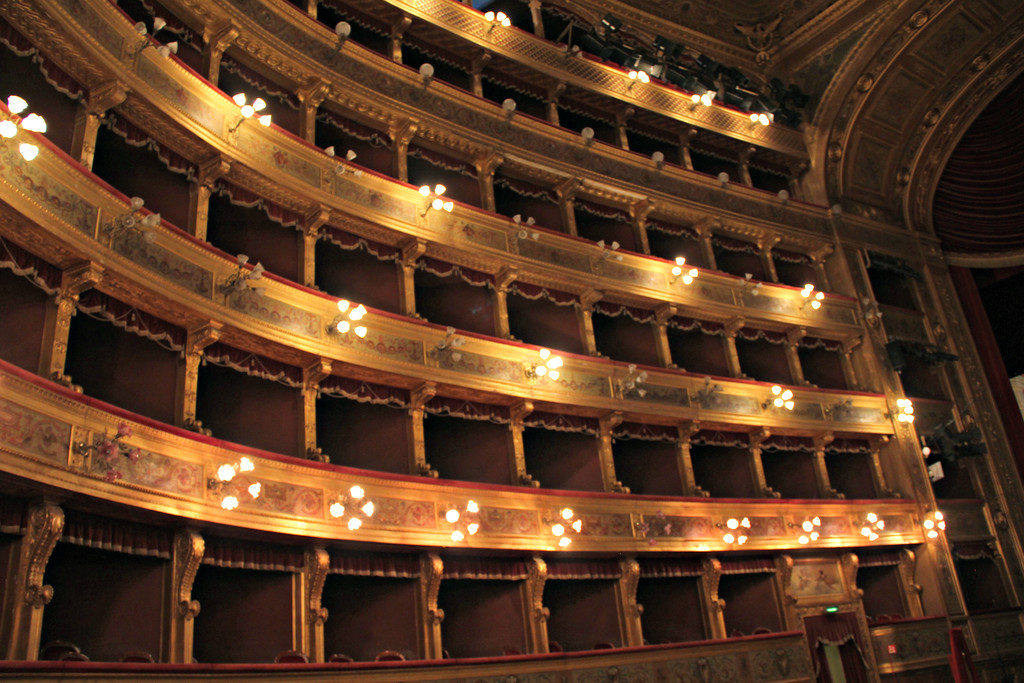

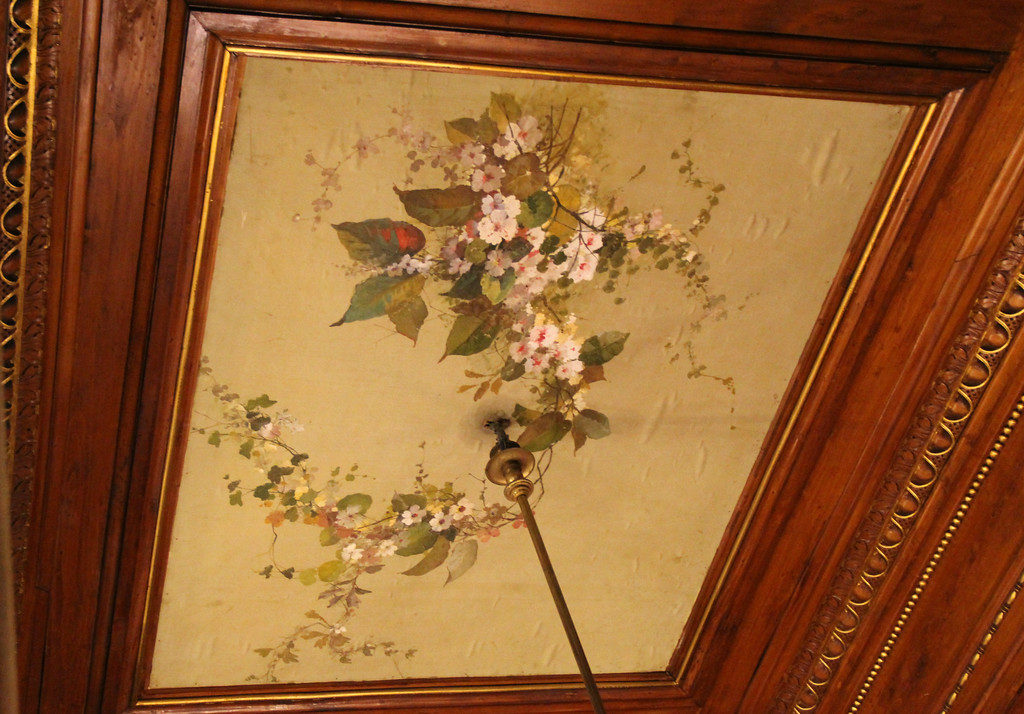
Part of the ceiling in the auditorium reminded me of a dome although it is patterned after a flower. It is called the Symbolic Wheel and has a center piece and eleven “petals.” The petals were painted by different artists. Some look like clouds while others have people playing instruments. If you look at the outer corners you can see some openings – these are for ventilation. The second picture shows you a close-up of one of the petals and makes the opening a little more obvious. This is how we saw the ventilation system on our visit. After we were home and I went to the opera house’s website, I found the third picture which is taken from above the Symbolic Wheel. It shows the ropes and pulleys used to operate the system and gives you a sense of just how large of an opening can be created for ventilation. It really is an ingenious system!
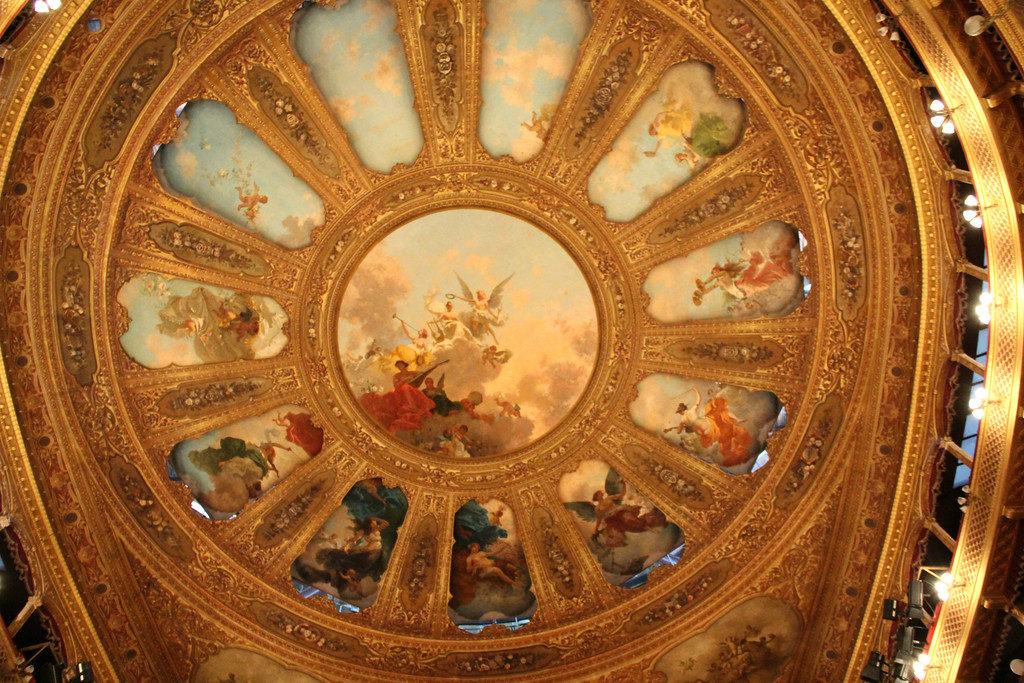


We were treated to a mini-concert while visiting the opera house. The first picture shows a soprano singer performing, “Peace, My God, Peace.” We also visited the Pompeian Hall. Once reserved for nobles, it was used as a smoking room and for conversations during performance intervals. The room is circular and is also called the Echo Hall because of its acoustics. Today it is used for special dinners and for exhibits. There was an exhibit on immigration during our visit. One of the pieces is shown in the second picture. We thought it was a very relevant exhibit considering the current (2018) debate on immigration in the United States. Finally, there is picture of part of the beautiful dome in Pompeian Hall. Our visit to the Teatro Massimo certainly was evidence that Palermo has become an important cultural center in Sicily and Italy.
